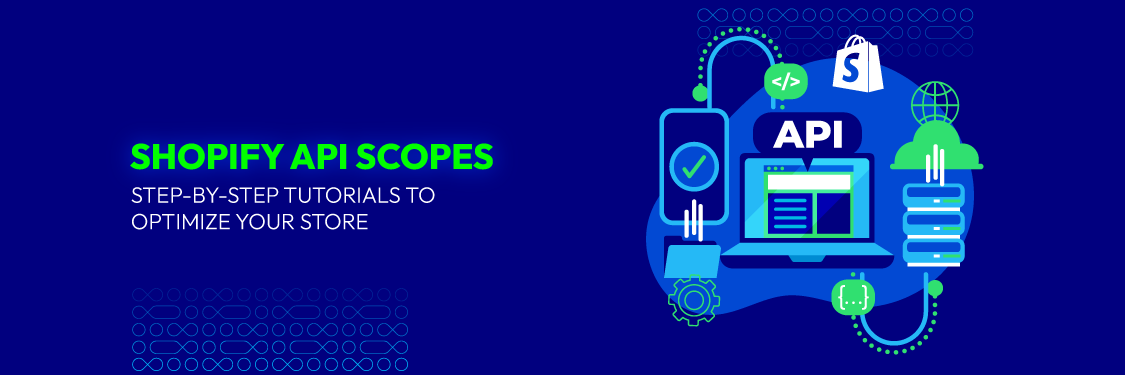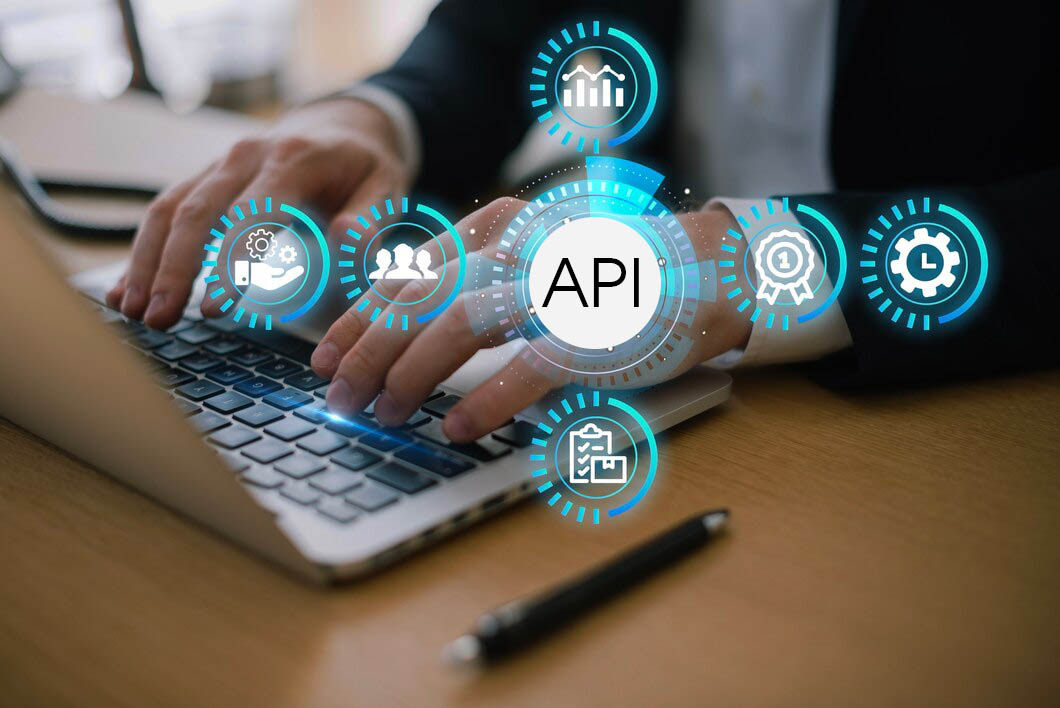Shopify API Scopes: Step-by-Step Tutorials to Optimize Your Store
Summer Nguyen | 01-05-2024

Understanding how scopes can impact your integration is crucial when using the Shopify API scopes. Shopify scopes act as access controls to various subsets of a store’s data. They must be configured correctly for your integration to work since they specify which data you can view and edit.
We will discuss Shopify API scopes, how they operate, and some benefits when utilizing the Shopify API in this blog article. Don’t hesitate any longer, let’s scroll down to a detailed view!
What are Shopify API Scopes?
Shopify API scopes are permissions that determine the level of access a Shopify app has to a store’s data. Scopes are required to access specific data or perform certain actions through the Shopify API.
Application Programming Interfaces, or APIs, act as a link between various software programs. It enables people to interact and exchange information in a systematic way. APIs specify a set of guidelines and protocols that specify how information is transferred and what features are offered.
Streamlining the development procedure makes it possible for programmers to create new features and integrations without starting from zero. Since they enable seamless collaboration between many platforms and apps, APIs are essential in eCommerce.
They make it possible to combine different services, such as payment gateways, inventory management, and shipping suppliers, into a single platform, resulting in a seamless shopping experience for customers.
Additionally, Shopify API scopes give developers the ability to produce unique solutions that address the particular requirements of each online store, such as personalized marketing campaigns and sophisticated analytics.

As a result, it can be concluded that The Shopify API is a strong tool that enables developers to construct and deploy Shopify Apps intended to improve the functionality and performance of merchants’ online stores, as is evident from the API specification. </figure>
</div>Shopify API scopes give software developers access to data from stores using Shopify, which they may use for a variety of things. The API accepts HTTP requests like GET, POST, PUT, and DELETE and supports both XML and JSON formats.
In addition, it also offers developers freedom in their approach to creating unique solutions for eCommerce organizations because it is compatible with both REST and GraphQL.
Key Features of Shopify API Scopes
Granular Control
API Scopes allow developers to control the level of access that third-party apps and integrations have to a Shopify store’s data. This granular control ensures that apps and integrations only have access to the data they need to perform their intended function, improving store security and preventing unauthorized access to sensitive data.
Customization
Shopify API Scopes can be customized to meet the specific needs of a store owner or developer. By selecting the appropriate Read and Write Scopes, developers can create custom integrations and apps that can interact with a store in powerful ways.
Advanced Functionality
With the right API Scopes, developers can build apps that can read and write data to a store, automate tasks, and provide advanced functionality that can help to improve store performance and customer experience.
OAuth integration
Shopify API Scopes support OAuth integration, which allows developers to securely authenticate their apps and access Shopify’s APIs on behalf of a store owner.
App Management
Shopify API Scopes are managed through the “Apps” section of the Shopify admin dashboard, making it easy for store owners to view and manage the apps and integrations that have access to their store’s data.
In a nutshell, Shopify API Scopes are a powerful tool for store owners and developers who want to take full advantage of the Shopify platform and create custom integrations and apps that can help to grow their business.
Types of Shopify API Scopes
Storefront API

With the Shopify Storefront API, store owners have total creative control over their eCommerce website, including the ability to change themes and access Abandoned Cart Recovery.
Users may easily select and alter templates while also adding different components to operate their businesses efficiently.
Access to built-in e-commerce capabilities like live chat assistance and a variety of payment alternatives is also provided by the Shopify Storefront API. The Storefront API is solely supported by GraphQL.
You can create quick, dependable apps with Shopify’s officially authorized libraries. Since the Storefront API is unauthenticated, there is no need for a login and password; all users have read-only access.
Admin API
The Admin API can be used to enhance the user interface of your Shopify store. Both GraphQL and REST are supported by the versioned Shopify Admin API. Apps must expressly seek the necessary access scopes from vendors during installation.
All requests are subject to rate limitations, although GraphQL and REST rate limits are applied using different techniques.
With the programming languages and frameworks you are currently familiar with, you can create quick, dependable apps using Shopify’s supported libraries. All REST Admin APIs require a current Shopify access token. Endpoints are selected based on the demands of the application.
Payment Apps API
Shopify partners can access their Shopify Payments account and payment app setup information using the Payments Apps API. Users can resolve or deny Captures, Refunds, Payments, and Void Sessions using this API. Only GraphQL supports it, and all requests are subject to rate limitations.
The payments app extension must be configured, uploaded, and published for approval in order to convert a public app into a payment app.
Partner API
Shopify Partners can access the information on their Partner Dashboard through the Partner API. With this access, partners can efficiently scale their businesses by computerizing front- and back-office functions. Partners can read transactions affecting profits, Experts Marketplace jobs, and app events using this API.
However, the Partner API’s transaction data is solely available for analytical use. Additionally, the Shopify Partner API puts rate limits on all requests and is only accessible through GraphQL.
In order to successfully authenticate calls to a Partner API endpoint, two pieces of information must be provided. Because GraphQL uses the Partner API client to get the information it needs from a Partner Account, it may be used to query the Partner API using Partner Dashboards.
Ajax API
A collection of streamlined Shopify REST API endpoints are made available by the Ajax API for the creation of Shopify themes.

The Ajax API may be used for a variety of purposes, such as adding items to the shopping cart and changing the number of items in it, recommending products as you type in the search area, and presenting relevant product recommendations.
Access tokens and API keys are not necessary to use ajax APIs because they are not authenticated. There are no strict restrictions on the Ajax API, and API replies return data in JSON format.
Section Rendering API
Users can ask for the HTML markup for theme parts using AJAX and the Section Rendering API. By obtaining and dynamically updating only specific pieces, it enables store owners to update page content without refreshing the entire page.
For instance, you can paginate search results using the section rendering API without having to reload the entire page.
The sections, which are identified by their section IDs, can be rendered using the section query parameter. The answer, which is a JSON object, contains pairs for each section ID and its associated rendered HTML.
Messaging API
The Shopify Inbox is a web, Android, and iOS tool that enables Shopify merchants to centralize their business communications from SMS and messaging apps like Facebook Messenger. Messaging API is used to deliver messages to the Shopify Inbox.
You must get in touch with the Messaging API team and set your Inbox callback URL in order to begin using the messaging API. Then you can use the merchant’s shop data with the Shopify Messaging API endpoints after prompting the merchant to accept the Messaging API access scopes.
Customer Privacy API
Developers can read and write cookies relating to a customer’s consent to be tracked thanks to the customer privacy API. It is a JavaScript API that is implemented as a property on the global window and is browser-based.
The customer privacy API can be used to create banners and other consent-collection tools for General Data Protection Regulation (GDPR) compliance.
According to the California Consumer Privacy Act (CCPA), you can use the API for tracking or exporting data about storefront visits for marketing strategies and analytics use cases to ensure GDPR compliance.
The API is implemented as a global window property.All Shopify online stores can access Shopify Object.
How to Use Shopify API Scopes
Shopify API scopes are used to define the level of access and permissions that a Shopify app has when interacting with a shop’s data through the Shopify API.
Each API call made by your app will require specific permissions, and these permissions are defined by the scopes you request when you create or install your app. Here’s how to use Shopify API scopes:
Step 1. Create a Shopify App
To get started, you need to create a Shopify app. You can do this in the Shopify Partner Dashboard.

Step 2. Define Required Scopes
In your Shopify Partner Dashboard, when you create or configure your app, you will need to specify the scopes your app requires. Scopes define what actions your app can perform on behalf of the shop. Some common scopes include:
- read_products: Allows your app to read a shop’s product data.
- write_products: Allows your app to create and update product data.
- read_orders: Allows your app to read a shop’s order data.
- write_orders: Allows your app to create and update order data.
There are many other scopes available depending on the specific functionality your app requires.
Planning to build a custom React-based Shopify app? Don’t miss our full tutorial on how to seamlessly integrate a React app in Shopify using the right API scopes and setup flow.
Step 3. Request Authorization
When a shop installs your app, they will be prompted to grant the requested scopes to your app. This is part of the OAuth authorization process.
Step 4. Access and Use Data
Once your app is granted access, it can make API requests to interact with the shop’s data based on the scopes that were granted. For example, if your app was granted the read_products scope, it can make API calls to fetch product data.
Step 5. Test and Verify
During development, it’s a good practice to verify that your app is only requesting and using the scopes it needs. Over-requesting permissions can lead to rejection by the Shopify app review process and may cause privacy and security concerns.
Step 6. Refresh Tokens (optional)
Depending on the specific OAuth flow you are using, your app may need to refresh access tokens periodically. Be sure to manage token expiration and refresh accordingly.
Step 7. Follow API Documentation
Refer to the official Shopify API scopes documentation to understand which scopes are required for specific API endpoints and to learn more about how to make API calls, rate limits, and best practices.
Here is an example of how to specify the scopes in a Shopify API request when obtaining an access token using OAuth:
POST https://SHOP_NAME.myshopify.com/admin/oauth/access_token
Content-Type: application/json
{
"client_id": "YOUR_API_KEY",
"client_secret": "YOUR_API_SECRET",
"code": "AUTHORIZATION_CODE",
"scope": "read_products,write_products"
}
In the example above, you specify the required scopes in the scope parameter. Remember to handle permissions carefully to ensure the security and privacy of the shop’s data and to comply with Shopify’s policies and guidelines.
Ending Words
In the final analysis, for developers and companies looking to create apps and integrations within the Shopify ecosystem, understanding and efficiently utilizing Shopify API scopes is crucial.
These scopes specify the particular access rights and permissions given to an app, enabling it to communicate with a shop’s data via the Shopify API.
In order to ensure a successful and compliant connection, it is crucial to carefully assess the required scopes, adhere to best practices for data security and privacy, and follow Shopify’s rules.
Developers may build strong, safe, and effective applications that improve the Shopify experience for both customers and merchants by using the right Shopify API scopes.







![Top 20+ Must-have Shopify Apps for 2025 [Free & Paid] - Mageplaza](https://cdn2.mageplaza.com/media/blog/must-have-shopify-apps/top-must-have-shopify-apps.png)
![[2025 Updates] Top 10+ Upsell Apps for Shopify - Mageplaza](https://cdn2.mageplaza.com/media/blog/best-upsell-shopify-app/cover.png)